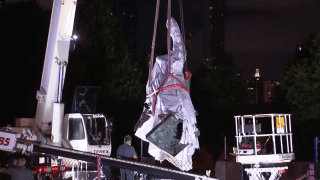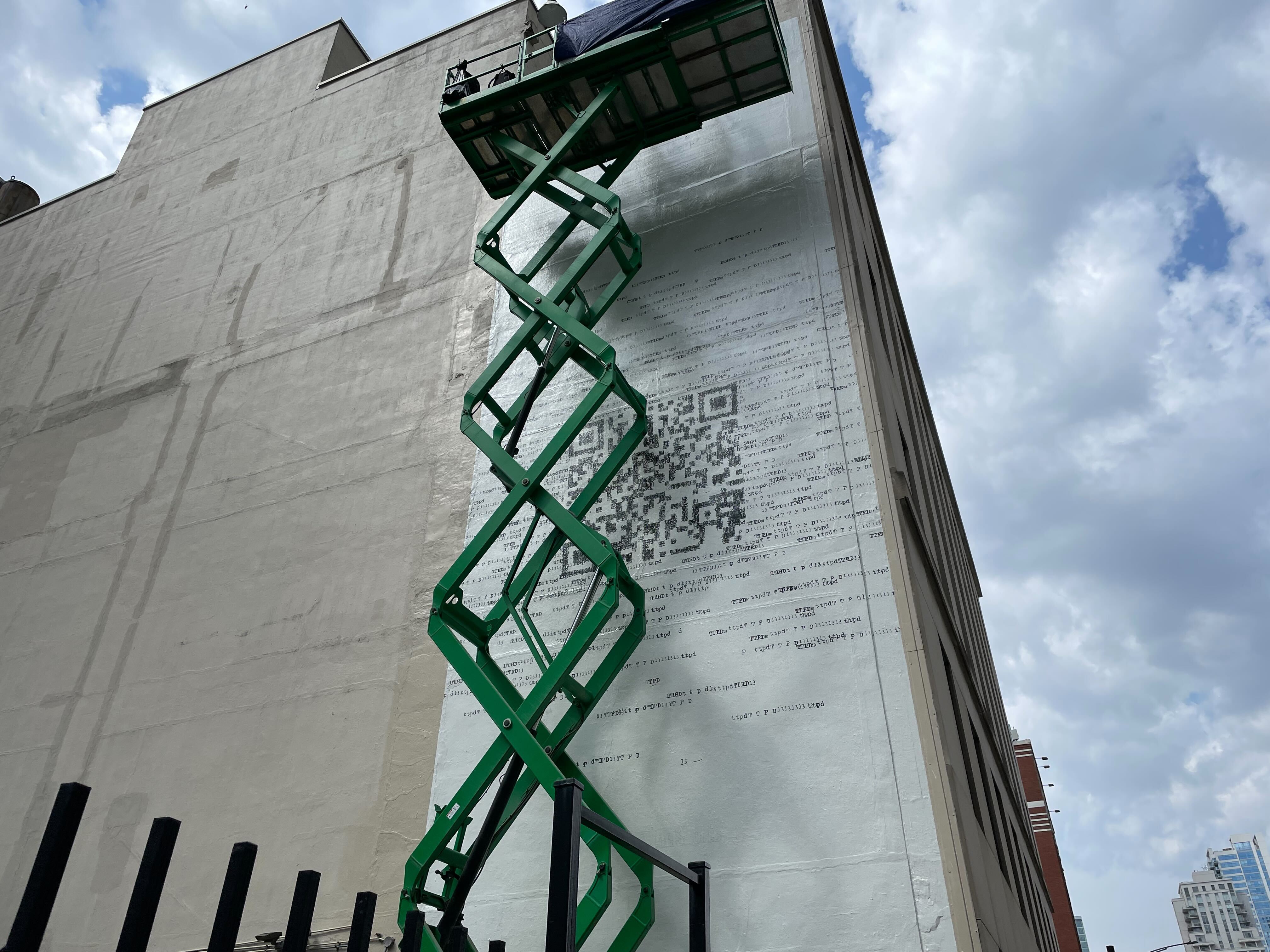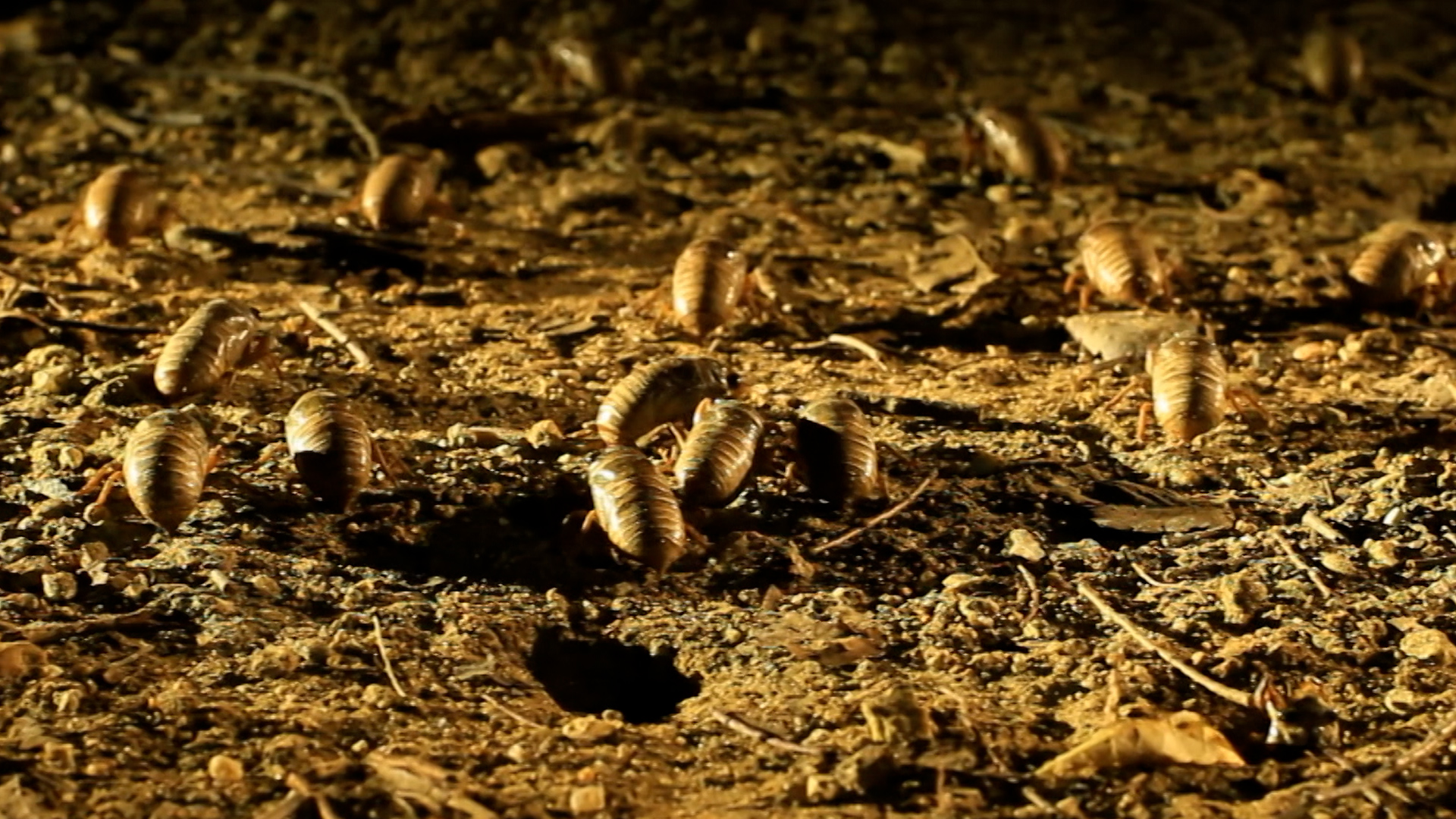
A city panel recommended Friday that Chicago permanently remove its three Christopher Columbus statues and the Balbo Monument in Burnham Park, and consider altering or removing nearly 40 other monuments.
It is not clear if the city will follow the recommendations of the report by the Chicago monuments project advisory committee. In May, Mayor Lori Lightfoot hinted strongly at ignoring them.
Lightfoot formed that committee after widespread protests in 2020 and a violent clash with police when activists tried to topple the Columbus statue in Grant Park. Since then, the committee reviewed over 500 city monuments and is recommending that 41 of them either be removed, moved, replaced or altered to provide more context.
As the city considers those recommendations, it will offer $50,000 in grants for eight new art projects that could replace the monuments under review.
Feeling out of the loop? We'll catch you up on the Chicago news you need to know. Sign up for the weekly Chicago Catch-Up newsletter here.
The goal is to “memorialize events, people or groups that historically have been excluded or underrepresented,” the report states. “This is a crucial step in telling the true and complete history of Chicago and all its people.”
The report contained a “counterpoint” essay arguing for the importance of the Columbus statues and the Balbo statue.
The “monuments are not, nor were they intended to be, political statements,” wrote committee member Sergio Giangrande, former president of the Joint Civic Committee of Italian Americans, a group that urged the city to return the Columbus statues and provide security for them.
Local
“It is senseless to try and make them into a political agenda,” he wrote.
In July 2020, Lightfoot ordered two Columbus statues “temporarily” removed in the middle of the night from Grant and Arrigo parks, based on information that something bad was about to happen. A third Columbus statue remains standing near 92nd Street and South Chicago Avenue.
The report urges the city not to return the Columbus statues in Grant and Arrigo parks because “the image of Columbus has become a bitter reminder of centuries of exploitation, conquest and genocide.”
The statues would also see continued “adverse public reaction,” and providing long-term security for them is untenable, the report states.
The panel also recommended these monuments be removed permanently:
- The Italo Balbo monument near Soldier Field because it “was a gift of the fascist government of Italy” and named after “a leader of the movement’s paramilitary Blackshirts” and “a supporter of Italy’s forced annexation of Ethiopia.”
- DuSable Bridge reliefs that show “the Battle of Fort Dearborn within an allegorical narrative of the triumph of Western civilization. American Indians are used as merely a foil to help define the heroic acts and qualities of colonizing forces.”
- Jean Baptiste Beaubien plaque, at the Chicago Cultural Center, which honors the “second” citizens of the city, neglecting Native Americans who were already there.
- Jacques Marquette-Louis Jolliet memorial at Marshall and 24th Boulevard, which “reinforces stereotypes about American Indians.
- Tablets dedicated to Cavelier De La Salle and Jolliet and Marquette at the DuSable Bridge state, “‘The first white men to pass through the Chicago River…,’ (and) explicitly voice the ideology of white supremacy.”
- Bust of Melville Fuller at the Fuller Park Field House, 331 W. 45th St., named after the Supreme Court justice who presided over the Plessy v. Ferguson ruling that enshrined segregation.
- General Philip Henry Sheridan monument at Belmont and DuSable Lake Shore Drive because of his brutality against Native Americans during the Civil War.
Three artworks need added context to “acknowledge the challenging legacies of their subjects,” the panel wrote:
- William McKinley monument in McKinley Park, named after the president who led the U.S. into the Spanish-American war.
- George Washington monument in Washington Park, named after the country’s first president — who also owned slaves.
- Indians (The Bowman and the Spearman) at Ida B. Wells Drive in Grant Park.
And several monuments need revised text, the panel wrote, including a collection of Lincoln statues, the General John Logan monument in Grant Park, the Ulysses S. Grant and Benjamin Franklin monuments in Lincoln Park, and the Illinois Centennial monument in Logan Square.
The committee said it selected the 41 monuments to be reviewed because they: promote narratives of white supremacy; demean Native Americans; memorialize racist people, acts, slavery and genocide; present one-sided views of history; neglect stories of women, people of color, themes of labor, migration and community building; and “create tension between people who see value in these artworks and those who do not.”
The committee said it held 37 public meetings with around 1,700 people attending. Nearly 2,000 people gave responses to the committee online. Most of the comments were about the Christopher Columbus, Abraham Lincoln and “Indians (The Bowman and the Spearman)” monuments, the committee said.



